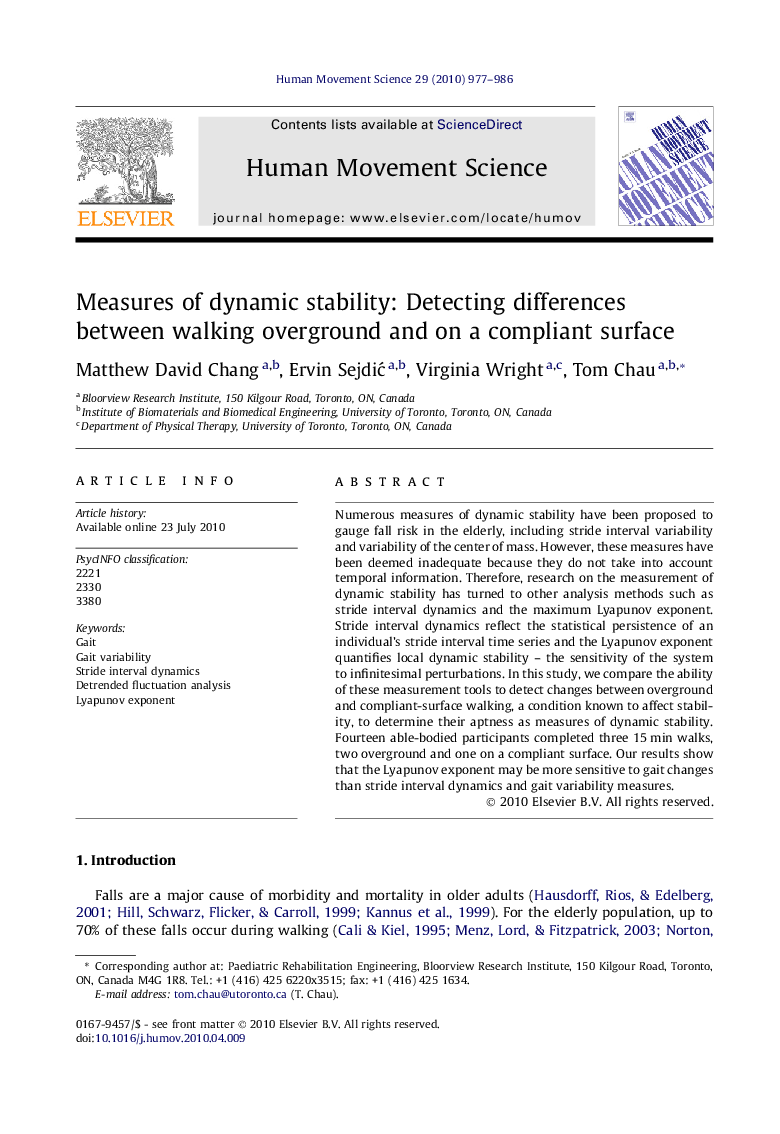| Article ID | Journal | Published Year | Pages | File Type |
|---|---|---|---|---|
| 928639 | Human Movement Science | 2010 | 10 Pages |
Numerous measures of dynamic stability have been proposed to gauge fall risk in the elderly, including stride interval variability and variability of the center of mass. However, these measures have been deemed inadequate because they do not take into account temporal information. Therefore, research on the measurement of dynamic stability has turned to other analysis methods such as stride interval dynamics and the maximum Lyapunov exponent. Stride interval dynamics reflect the statistical persistence of an individual’s stride interval time series and the Lyapunov exponent quantifies local dynamic stability – the sensitivity of the system to infinitesimal perturbations. In this study, we compare the ability of these measurement tools to detect changes between overground and compliant-surface walking, a condition known to affect stability, to determine their aptness as measures of dynamic stability. Fourteen able-bodied participants completed three 15 min walks, two overground and one on a compliant surface. Our results show that the Lyapunov exponent may be more sensitive to gait changes than stride interval dynamics and gait variability measures.
